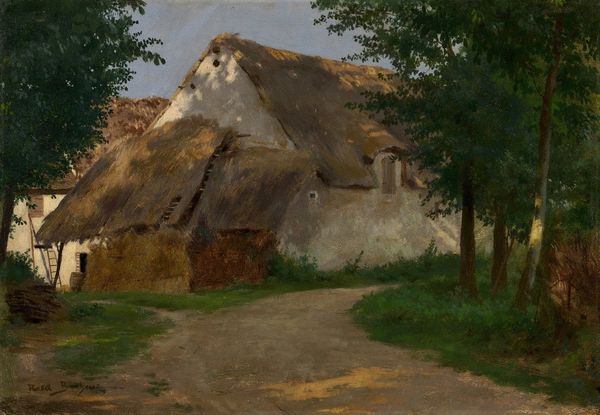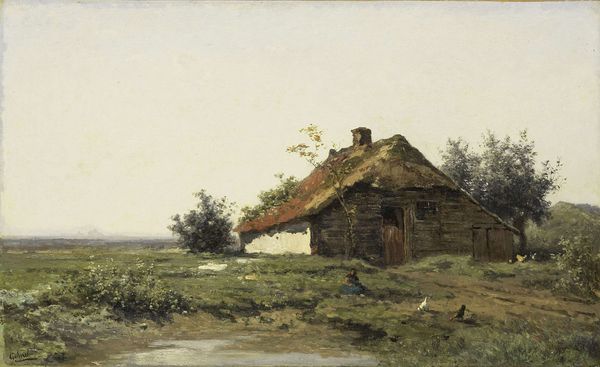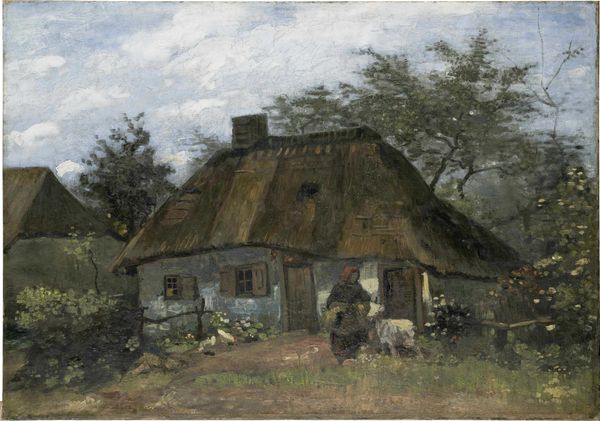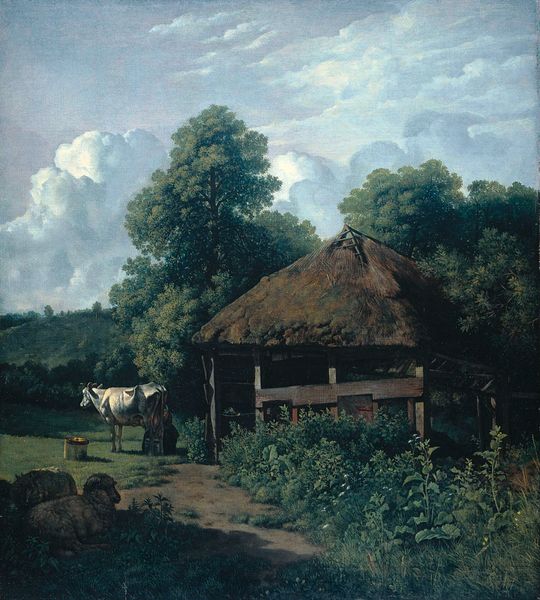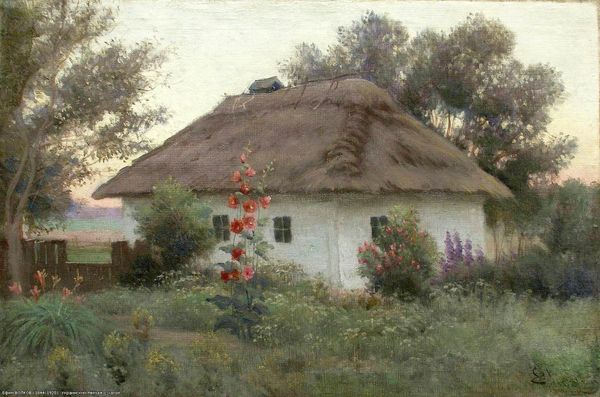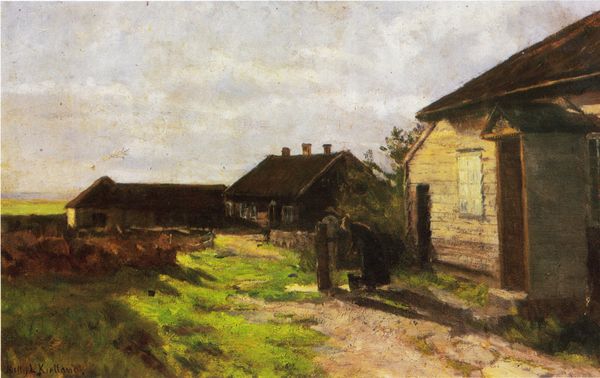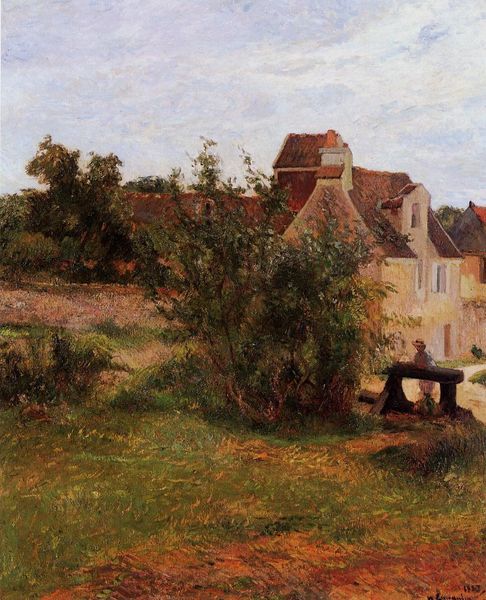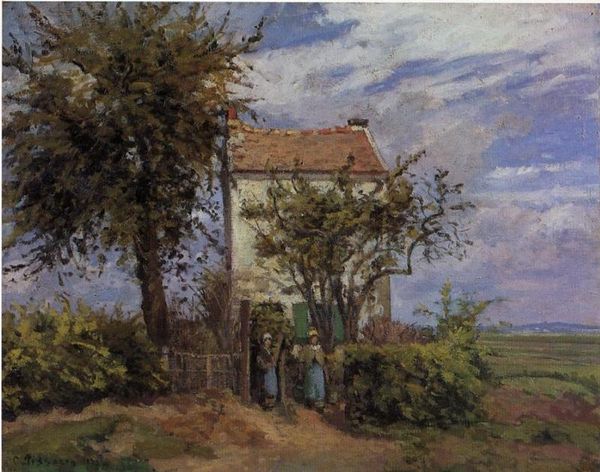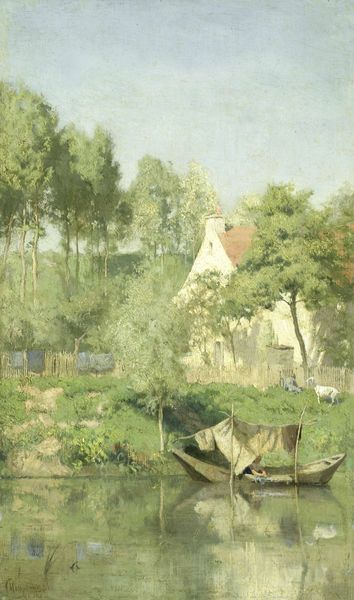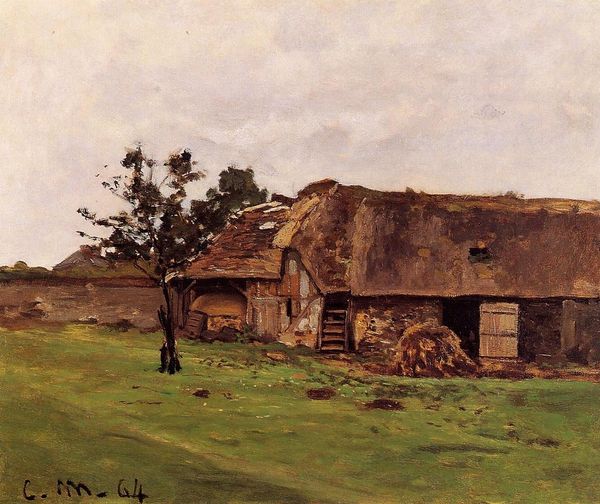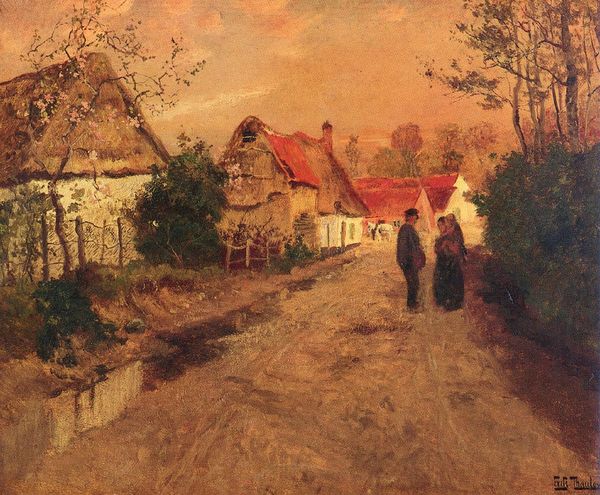
Copyright: Public domain
Editor: We're looking at Efim Volkov's "Landscape with an Abandoned House," painted in 1897, rendered in oil. The textures seem so tactile, you can almost feel the rough thatch of the roof. What jumps out at you when you consider this piece? Curator: Notice the dwelling and how it's situated. How was the thatching sourced and applied? The oil paint mimics textures; however, what social relations existed in this rural area in the late 19th century to cause this abandonment? Did those factors lead to the deterioration of materials like the plaster and thatch? Editor: So you’re thinking about why it’s abandoned – were the materials readily available? Curator: Precisely. Labor shaped this landscape. Was there access to quality raw materials? Was there skilled labor? Did societal shifts and economy lead to its state of decay? Impressionism often focused on the fleeting moment, but here, the materials tell a slower, starker story of hardship, challenging the idealized landscape. Editor: That's fascinating, considering it's painted "en plein air". Curator: Exactly! It's romantic, sure, but the lived reality is interwoven into the materiality. Even the painterly strokes of the forest become about access, labour, time, value. Editor: So, the brushstrokes capturing light are secondary to the social context and making? Curator: They become part of it, another layer of meaning connected to the means of production and how it relates to labour, material scarcity and social implications that may be influencing how abandoned that house became. Editor: This has completely reshaped how I see this landscape. I’m seeing this piece as evidence, not just scenery. Curator: Indeed. We moved beyond aesthetic appreciation, seeing it as an intersection of material culture and socio-economic conditions of the late 19th century.
Comments
No comments
Be the first to comment and join the conversation on the ultimate creative platform.
